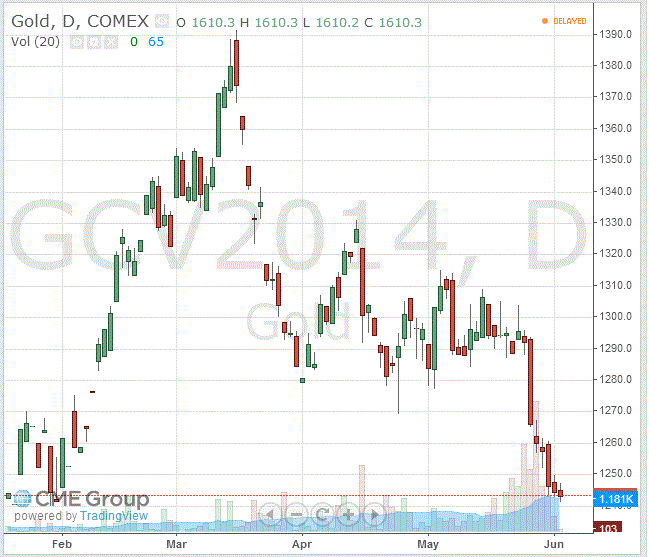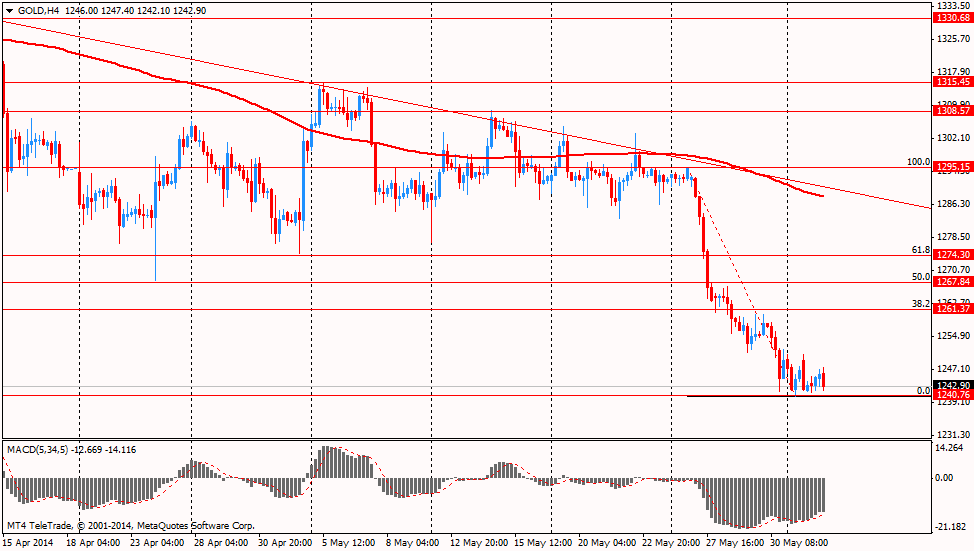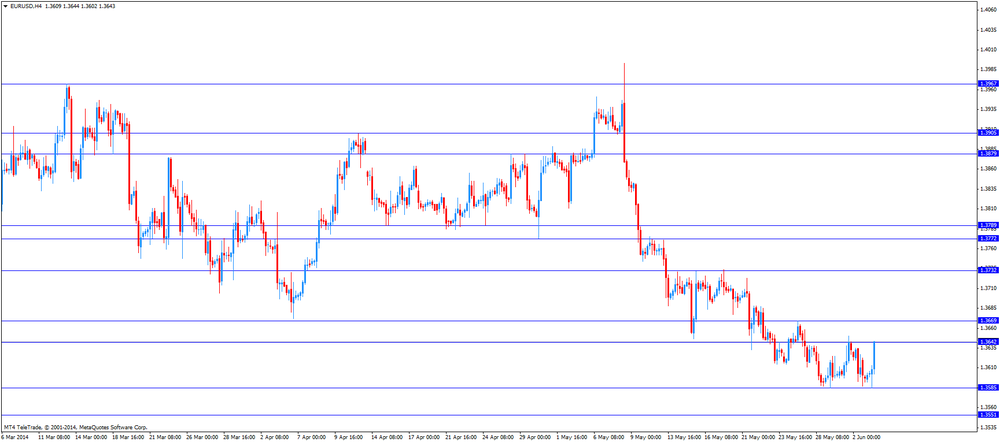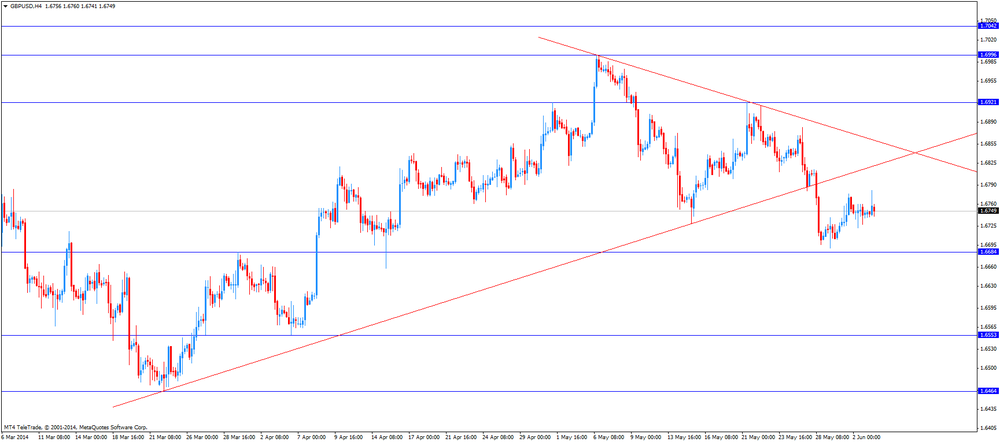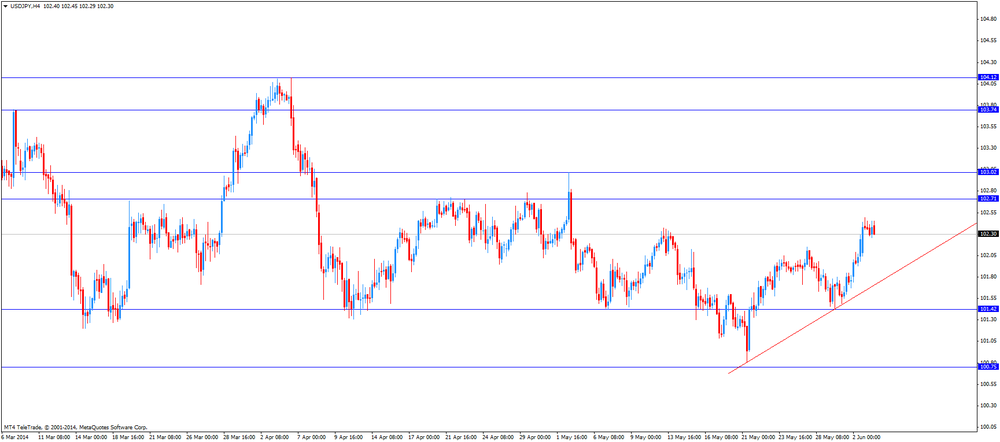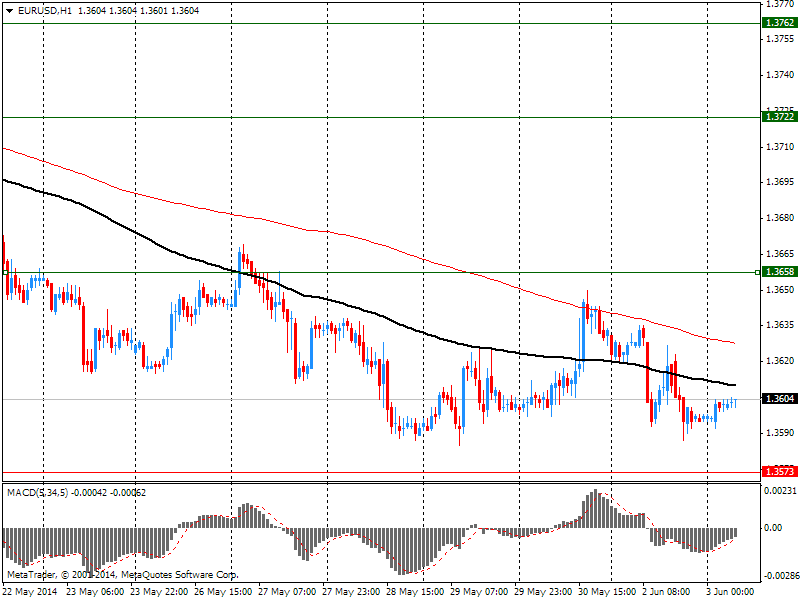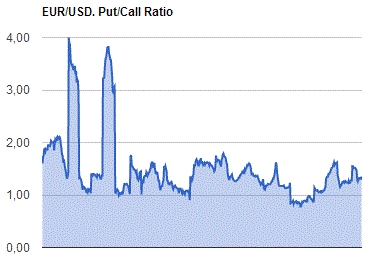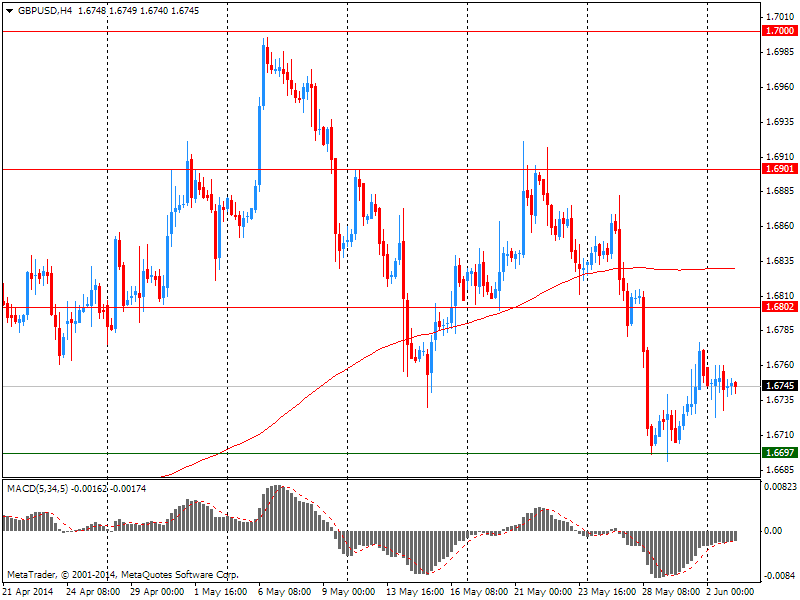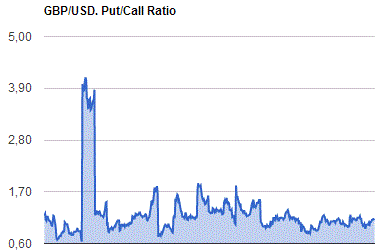Economic
calendar (GMT0):
01:00 Australia Retail Sales Y/Y April +5.7% +5.7%
01:00 China Non-Manufacturing PMI May 54.8 55.5
01:30 Australia Retail sales (MoM) April +0.1% +0.3% +0.2%
01:30 Australia Current Account,
bln Quarter I -10.1 -7.1 -5.7
01:30 Japan Labor Cash Earnings, YoY April +0.7% +0.6% +0.9%
01:45 China HSBC Manufacturing PMI (Finally) May 49.7 49.7 49.4
04:30 Australia Announcement of
the RBA decision on the discount rate 2.50% 2.50% 2.50%
04:30 Australia RBA Rate Statement
06:00 United
Kingdom Nationwide house price index May +1.2% +0.7% +0.7%
06:00 United
Kingdom Nationwide house price index, y/y May +10.9 +10.9% +11.1%
08:30 United
Kingdom PMI
Construction May 60.8 61.2 60.0
09:00 Eurozone Harmonized CPI, Y/Y (Preliminary) May +0.7% +0.7% +0.5%
09:00 Eurozone Unemployment Rate April 11.8% 11.8% 11.7%
The U.S.
dollar traded lower against the most major currencies due to the disappointing
ISM manufacturing purchase managers’ index in the U.S. The Institute of Supply
Management released its manufacturing purchasing managers' index for the U.S.
The index dropped to 53.2 in May, from 54.9 in April. Analysts had expected a
gain to 55.5.
The New
Zealand dollar traded higher against the U.S dollar due to speculation New
Zealand’s currency will benefit along with the Australian dollar. Market
participants are awaiting the release of the Australian economic growth
tomorrow. Australia’s economy should expand 1.1% in the first quarter.
In the
absence of any major economic reports in New Zealand, investors also remain concerned about
the impact of lower dairy prices on the economy and the interest rate.
The
Australian dollar climbed against the U.S. dollar after the Reserve Bank of
Australia’s interest rate decision. The Reserve Bank of Australia (RBA) kept interest
rate unchanged at a record low 2.5% as expected. The RBA decided to continue
accommodative monetary policy. Accommodative monetary policy should provide
support to demand and to economic growth.
Earlier in
the trading session, Australian retail sales were released. Retail sales in
Australia increased 0.2% in April, missing expectations of a 0.3% gain in
March, after a 0.1% rise in March.
Australia’s
current account deficit declined to AUD5.67 billion in the first quarter from AUD11.7
billion the previous quarter. The deficit of the previous quarter was revised
down to AUD11.7 billion from a deficit of AUD10.1 billion. Analysts had
expected a reduction of the deficit to AUD7.0 billion.
The
Japanese yen traded little changed against the U.S. dollar. Labor cash earning
in Japan rose 0.9% in April, exceeding expectations for a 0.6% gain, after a
0.7% increase in March.
EUR/USD:
the currency pair increased to $1.3605
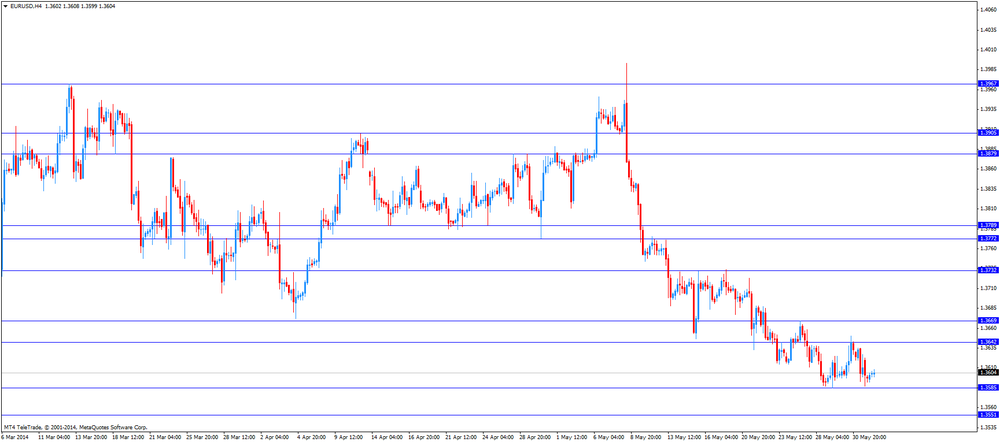
GBP/USD:
the currency pair traded mixed
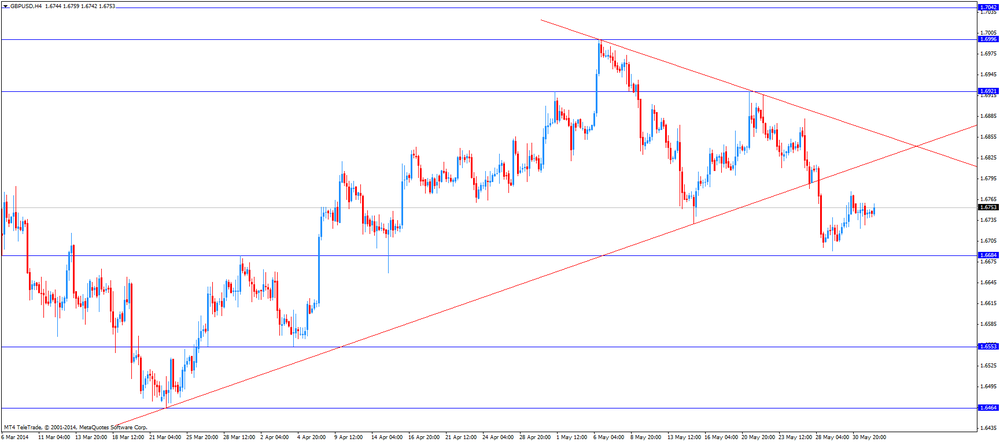
USD/JPY:
the currency pair traded mixed
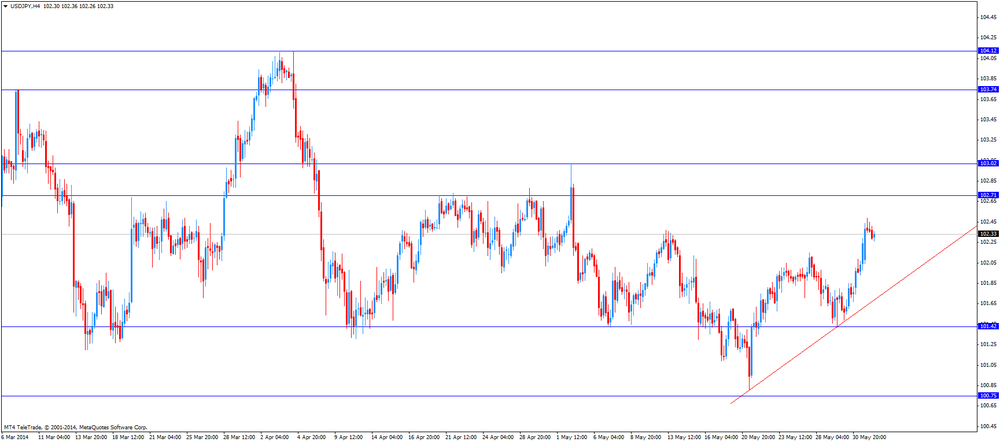
AUD/USD:
the currency pair increased to $0.9268
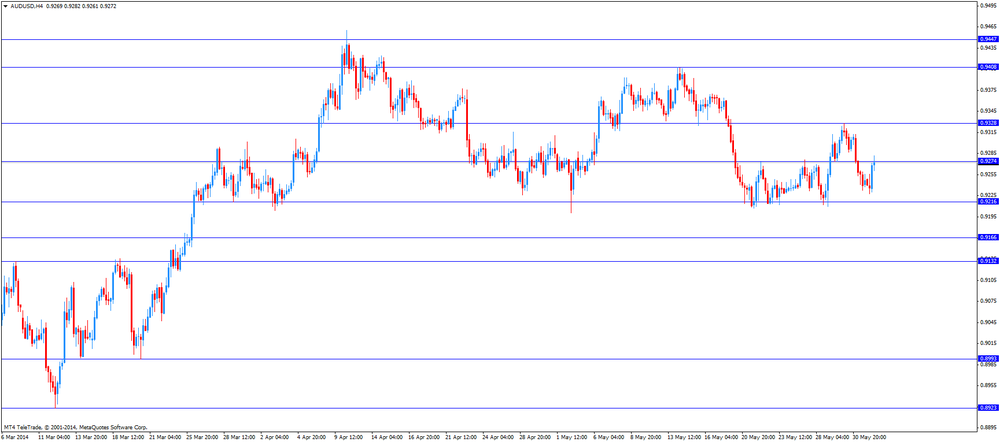
The most
important news that are expected (GMT0):
14:00 U.S. Factory Orders April
+1.1% +0.6%

